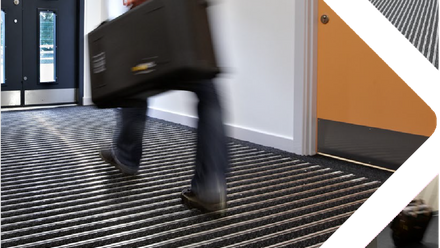Can "key building information" unlock Building Safety?
Attending exhibitions like Futurebuild show that the built environment zeitgeist continues to focus on building safety. Whilst many innovations are being suggested to realise building safety, there is no doubt that good quality product information will be key. Since the publication of Building a Safer Future (the Hackitt Review) in 2018, Government and the sector at large have undertaken a wealth of activity to realise the recommendations within. This has included (and is by no means exhaustive):
- HSE working with DLUHC and others to begin their duties as the building safety regulator;
- BRAC publishing its Golden Thread Report;
- BSI publishing a suit of Built Environment Competence Standards; and
- Regulatory reform supported by several amendments and new legislative instruments.
Several of these new statutory instruments will likely relate to products, in particular those which sit outside of Designated Standards but are considered "safety critical". For example, one of the most recent of these instruments is The Higher-Risk Buildings (Key Building Information etc.) (England) Regulations 2023, which outlines some of the information required by the regulator (HSE) in relation to higher-risk buildings. Including:
- Use of the building (i.e. residential, office, shops, etc.)
- Number of storeys and staircases; and
- Information about materials and products (such as the structure, insulation, and external wall fixtures).
Thankfully some of the information needed to satisfy this instrument is already captured, by default, within standardized datasets. For example, the UK implementation of COBie recommended within BS EN ISO 19650-4 is able to capture the use of a building via classification (for example, En_20_50_80 Shop units within Uniclass) as well as how many storeys it consists of via the floor tab, which captures instances of IfcBuildingStorey. However, these solutions do not capture all the information required. Therefore further standardized good practice may need to be developed to consistently capture, for example, what materials constitute an external wall and their respective percentages.
With more instruments to come, these requirements highlight the importance that access to accurate, and well-structured product information will play in supporting both the golden thread as well as the wider building safety programme. Positively, several sector activities have looked to directly support the production of accurate, and well-structured product information.
Well-structured: Work by the Construction Products Association (CPA) and the Construction Innovation Hub (Hub) has focused on a methodology to standardize the production, use, and management of product information within the LEXiCON Project. Through LEXiCON, relevant authorities would be able to agree a standardized method to capture information, such as the percentage of materials within a wall system. In addition there are several readily available solutions, such as BIMHawk, that have been developed based on principles aligned to those being developed for LEXiCON.
Accurate: Initiated by CPA, The Code for Construction Product Information (CCPI) was created to promote behaviour change in the way manufacturers provide information relating to their products. CCPI is built around several tests to ensure that product information is clear, accurate and unambiguous.
Access: Developed by BSI, BSI Identify utilises digital identification technologies to ensure both the unambiguous identification of products as well as access to key information about a physical product via a digital link. In addition, several product catalogues, such as Barbour Product Search, also provide access to information about products, including performance information.
As more statutory instruments are introduced, further clarity will be provided as to exactly what building and product information is needed. Regardless of what information is needed, there is no doubt that this information will need to be well-structured, accurate, and accessible.
This blog post is originally from the Barbour Product Search website






